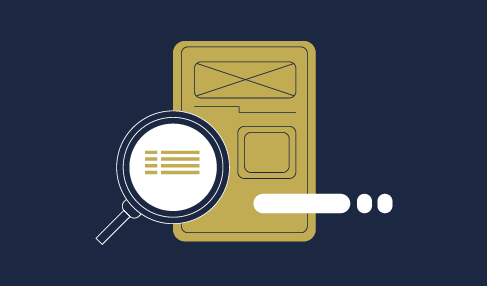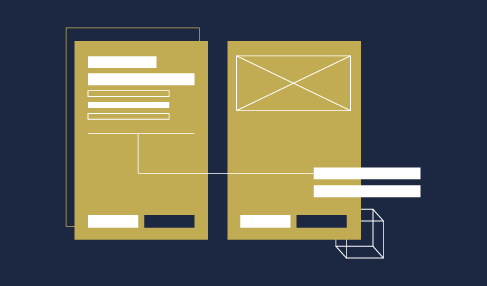Businesses across niches have their focus fixed on having a mobile app presence. App idea in the last few years have created a great level playing field among businesses of different sizes. Irrespective of the product and service quality, the app user experience has remained at the centre of all competition. At the same time, on-demand apps have created a new business category and economy of its own.
So, if you have a great app idea and want to make a business around it, you have the right environment to succeed. But, irrespective of the roar and shore around app business, not all apps can survive the onslaught of competition. However unique and breakthrough an idea appears to you, there is a chance of similar apps in the respective app markets.
So, a great app idea is far from enough to guarantee the success of an app project. It is the execution of the idea that matters more. When it comes to shaping an idea into an actual product, you need to measure your steps and focus on incremental development instead of creating a fully-fledged app in one go. If you outsource a mobile app development company with proven excellence, many of these concerns will be taken care of.
As per a recent Statista report, until 2020, mobile app downloads have reached a massive volume of 218 billion. So, the market opportunity is unlimited, but a handful of apps are going to get the lion’s share of this market pie. This is why shaping the app into a product by following the time tested principles and practices is the right thing to do.
Here, we are going to explain in brief some of the tested and tried principles to shape an app idea into a successful app product. Once you go through these, it is important to take into consideration some tried and tested mobile marketing tips.
Pen It Down on Paper
Every idea first flashes in our minds and then either disappears into oblivion or crystallizes into an actionable concept with our attention. So, instead of keeping the app idea in your mind, you need to write it down as vividly as possible. Only when you pen it down, the idea seems to have value for a future product.
When working on an idea, always remember that it must be relevant to real-life problems faced by people. Even if your app offers a similar solution provided by other apps, you can still stand out from the competition by offering a better user experience and more value. At this stage of ideation, just relate the core solution to the user problem and explain how well it is going to help users.
Detailed Research of the Market
Once you have a clear idea about the app, and its key value propositions, it must be validated by thorough market and audience research. The idea may seem to be highly feasible for you. But, only in-depth market research will reveal how relevant it is for the audience, and how feasible it is to aim for a large and loyal audience.
The most common way to carry out market research is by focusing on the keywords or search terms that describe your app best. Just analyse how the target keywords of your app niche of different competitors perform.
The second most important thing is to know the key value propositions and shortcomings of the competitor apps. You need to measure the ways your app can deliver a better user experience, and avoid those shortcomings. You should conduct a detailed comparative analysis of strengths and weaknesses with the competitor apps.
For market research and competitor analysis, you need to ask the following questions and get clear answers to each one of them.
- Which applications are in direct competition?
- What products or services do they offer?
- What key value propositions or solutions do they offer?
- Which regions or areas have the highest traction?
- What are the demographic characteristics of their users?
- Are they doing well with their app business? If yes, find the key reasons behind their success.
- Did they fail to succeed? What are the key reasons for their failure?
- What are the shortcomings and fault lines of even the most successful competitor applications?
Based upon these answers, you can figure out how you can further tweak the app idea or make a better execution for delivering a better product.
Create Design Mock-ups
Now that the idea has more or less been crystallised into a concept with clear guidelines and boundaries, it is time to give shape to the app idea with a rough layout sketch. Create a design mock-up that showcases the application screen layout and the flow of the app.
Remember, mock-ups are rough sketches of the app screens describing the very basic look and flow of the application. It doesn’t involve designing well-articulated UI elements and their exact measurements and positions. Mock-ups are created not to deliver any design details, but to give a basic idea of the app’s look and feel.
Besides the rough screen layouts, mock-ups also describe the application navigation flow, and how interaction with one button leads to another page or screen. For creating expressive application mock-ups, you can use many paid and free tools. Balsamiq is a widely popular mock-up design tool to consider.
Create the Graphic Design
With the mock-up design, your app project starts to take material shape. Now, it’s time to go one step ahead by coming up with the graphic design. The graphic design of an app involves creating visual details and effects, deciding the images, the use of animations and motion design, etc.
There are two options to shape the graphic and visual assets of your application project. One is to do the design all by yourself with the help of a graphic design template, and the other is to engage a graphic designer professional. Despite increasing the cost of the project, the latter is always the better option because of their proven expertise and command of the design craft.
If you cannot afford to hire a graphic designer, use quality tools like Sketch, and use templates that don’t require much expertise except customisation in bits and pieces. It is always advisable to keep originality in design elements instead of copying anyone’s work. After all, you need to create unique value on every front of the application development.
Build an MVP App
MVP (or Minimum Viable Product) is the incremental development approach. You can roll out a very basic app with an elementary design and features, and after that, based upon user feedback, you can develop it further with required changes and value additions. The approach has become popular because of its capability in generating positive interest or validating an app product before going all out.
The MVP development approach is also considered reasonable for startups or small business app projects because of its fast-paced development and lower cost. It works as a free sample of a product for audience evaluation.
For an MVP app project, you need to decide the priority features and elementary UI/UX elements. Other features and UI/UX elements in the pipeline can be added following the audience feedback.
Test the App
Once the MVP app is ready for launch, you need to test it and remove all bugs and errors. There are several automation testing tools, such as Experitest or Robotium, to carry out testing for you. This is an uncompromising step, and you can also go for an expert testing company with well-equipped testing labs for multiple testing cycles.
When it comes to launching the app, you need to consider it as a crucial marketing step to pave the way to success. Make sure you have already done some pre-launch marketing campaigns across all online and offline channels, and that you have created an audience looking up to the launch of your app.
Conclusion
App development is far from just a one-shot game. The actual struggle begins when the app is launched. You need to keep an eye on key metrics and feedback, and deliver updates frequently to address them. It’s all about constant iterations and development.





